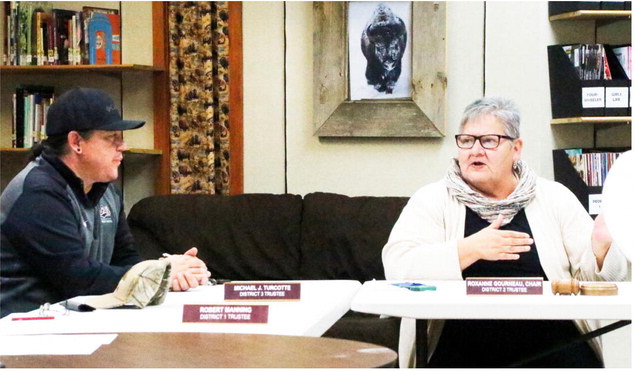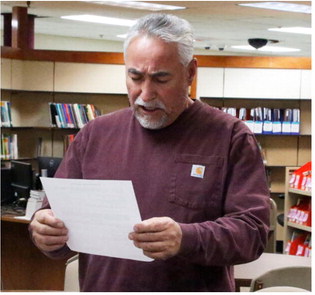Trends, Policy Focus Of MSU’s Ag Economics Conference
BOZEMAN – Scores of farmers, ranchers and agricultural policymakers flocked to Bozeman recently for an annual agricultural economics conference hosted by Montana State University.
The conference, part of MSU’s Celebrate Agriculture Week, has been held for 18 years and provides an opportunity to discuss agricultural trends and policy ideas relevant to Montana. Twelve presenters, most of them MSU economics professors, delivered lectures and presented their research projects throughout the day.
Conversations centered around how government policy, global events and drought will impact agriculture while recognizing the investments Montana has made to support farmers and ranchers in recent years.
Sreekala Bajwa, dean and director of the MSU College of Agriculture, highlighted how the university’s research endeavors – like plant breeding and automated technology in agriculture – directly help producers in Montana. Last year, the agriculture college spent a whopping $54 million on research.
“Our land grant mission is taking the knowledge that is generated by research to the producers, to the end users, who can benefit from that,” Bajwa said at the conference.
State agencies gave updates on their investments in Montana agriculture. Mike Honeycutt, executive officer of the Montana Department of Livestock, called attention to the work on a new agricultural lab complex. The Montana Legislature approved its funding in 2023.
Currently under construction off South 19th Avenue in Bozeman, the complex will house an upgraded Department of Livestock Veterinary Diagnostic Lab, Department of Agriculture Analytical Lab, and MSU Wool Lab. Honeycutt said the overdue upgrades will allow for expanded testing services and research opportunities. It’s slated to open in 2026.
Montana has also expanded its local slaughter and meat-processing capacity through increasing state inspections, Honeycutt said. In 2024, Montana approved its first Cooperative Interstate Shippers licensed facility — an alternative to U.S. Department of Agriculture inspection that still allows products to be shipped across state lines — and 11 other facilities have applied for licensure, Honeycutt said.
Christy Clark, director of the Montana Department of Agriculture, outlined the recent $50 million Climate Pollution Reduction Grant that Montana received from the Environmental Protection Agency in July. Some $20 million of the grant went to the Montana Department of Agriculture. Work will focus on fertilizer innovation, ranchland stewardship and improved confined feedlots for animals, Clark said.
Exports are also a critical part of Montana agriculture, Clark said. She highlighted some of the trade team visits to the state and Montana representatives traveling to other countries to solidify partnerships, like her April visit to Vietnam. Solid trade relationships are key going forward, as there are questions on how new tariffs could impact the state’s export market, she said.
The impacts of global politics were also a theme of the keynote M.L. Wilson lecture, delivered by Gary Schnitkey, a professor of farm management at the University of Illinois.
The surge and fall of global wheat prices carried impacts to Montana, one of the top grain-producing U.S. states, Schnitkey said. In 2024, wheat averaged $5.70 a bushel, down from $8.83 a bushel in 2023 following the war in Russia and Ukraine.
It’s likely wheat will continue to average around $6 a bushel in years to come, but the world’s shift away from free trade could make prices more unpredictable, Schnitkey said. The main sector hurt by that shift is agriculture because of its dependence on global exports, he said.
Tariffs proposed by President- elect Donald Trump are “not exactly comforting to people in agriculture,” Schnitkey said, but right now impacts on trade are a big question mark. Research from corn and soy industry groups projected the loss of some $5 billion in agricultural exports if additional tariffs went into place, an audience member added.
Schnitkey also discussed the role of federal farm safety net programs in a world where prices are stable for farmers, but operating expenses are soaring. Congress is set to extend or create a new Farm Bill next year, and it’s important to consider how increased federal spending could impact crop insurance premiums, land prices and rental rates, Schnitkey said.
Other presenters discussed the economic impacts of weather in recent years. In his agricultural outlook presentation, MSU Extension Specialist Joel Schumacher said Montana’s situation has largely improved compared to the bad drought year in 2022 when many ranchers had to reduce cattle herd sizes due to a shortage of hay.
Cattle prices are faring very well this year, Schumacher said, so ranchers who have calves to sell are in a good position. But ranchers who culled aggressively in 2022 are still trying to rebuild herd sizes and may have to pass up a paycheck to get cattle numbers back to where they were pre-drought, Schumacher said.
MSU professor Seunghyun Lee outlined his research on climate change and U.S. crop production. Based on studies conducted on corn and soy crops in the Midwest, Lee found that extreme heat can significantly reduce crop yields and create variable revenues.
In 2012, a heat wave increased revenue for Midwest farmers due to crop shortage, Lee said. The implications for Montana farmers are that crops and livestock influenced by the corn market might experience price shocks more frequently in a changing climate. Lee also discussed forthcoming research into how climate shocks impact what farmers choose to plant. In Montana, he plans to research to what extent farmers plant more winter wheat or fallow land in a season after a drought year.
Other presentations touched on the sharp increase in property taxes in Montana, risk management strategies for farmers and ranchers and the importance of value-added agriculture for creating new markets.
Between presentations, Bajwa thanked the conference sponsors, including the Montana Farm Bureau Federation, Montana Farmer’s Union, and MSU Extension, and commended the interest of attendees.
“We are celebrating the agricultural legacy, not only the past but also the present and the future of agriculture at Montana State University,” Bajwa said. “Thank you for your support of our students who are going to be the future of agriculture here in Montana and beyond.”

